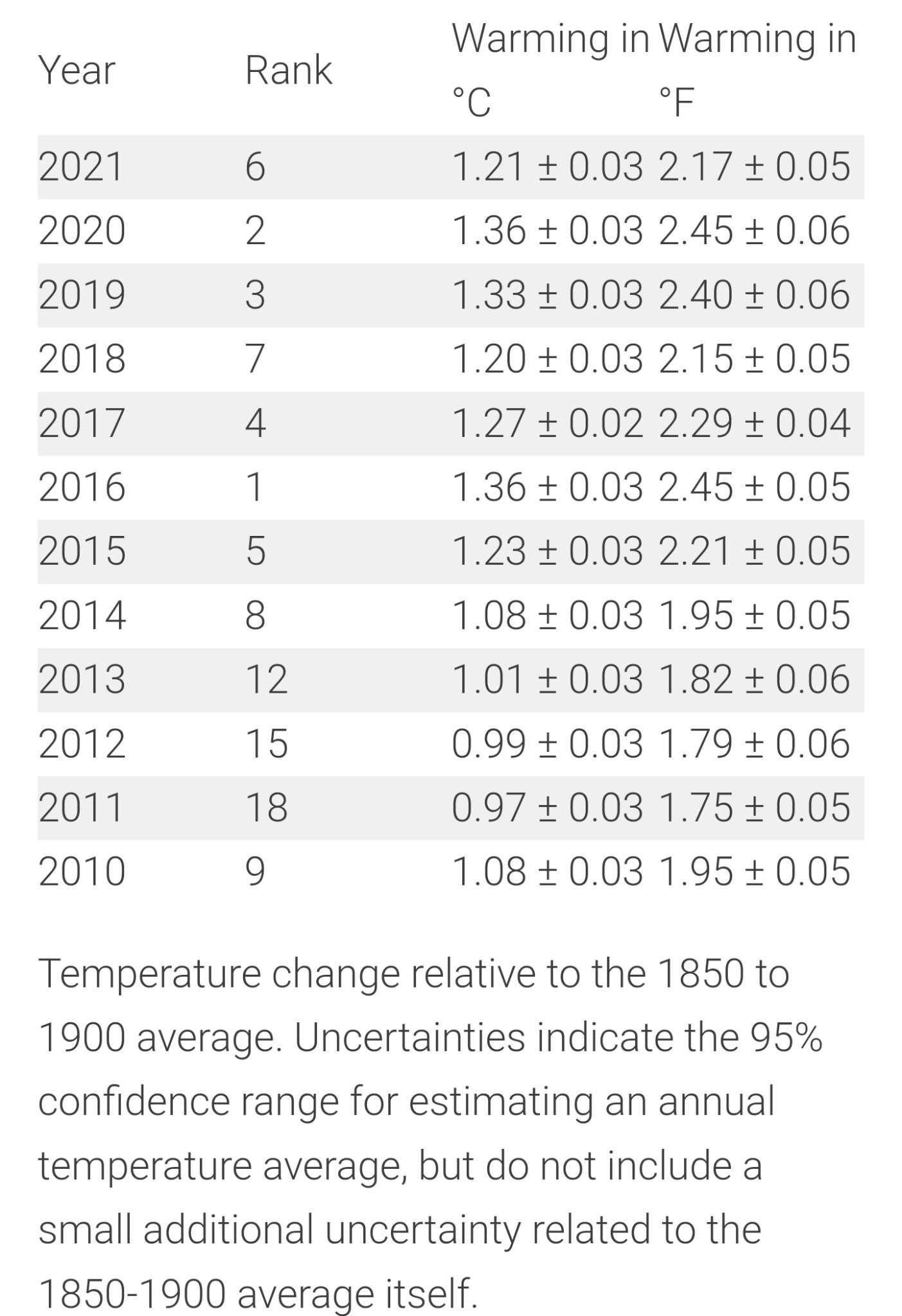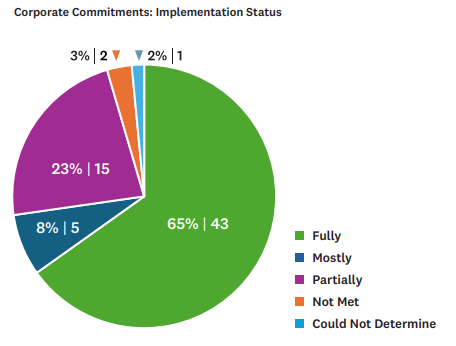Perspective on Risk - Oct. 27, 2024 (Climate)
Time For Action, Right? Nah.; State of the Crisis; Climate Tipping Points; Response and Reality; Practical Implications; Climate Change Financial Stability Models
Current policies are taking the world to a 2.8 degree temperature rise by the end of the century. That spells catastrophe. Yet the collective response remains pitiful. We are hurtling towards disaster, eyes wide open, with far too many willing it all on wishful thinking, unproven technologies and silver bullet solutions. (UN Sec. General Antonio Guterres)
When I started writing about climate change in early 20221, the discussion centered on whether the financial industry could manage climate risk through ESG investing and better disclosure. Later that year, we watched insurance companies retreat from high-risk markets and rivers run dry. By 2023, we witnessed unprecedented ocean heating and the first breach of the 1.5°C threshold. Now, in 2024, we're facing an accelerating crisis: oceans have largely stopped absorbing carbon, the Amazon has become a carbon emitter, and our infrastructure is beginning to fail under heat stress we never designed for.
The evidence is stark. We've moved beyond debating whether we can prevent climate change to confronting how quickly it's accelerating and what that means for our systems - financial, physical, and social. Global policies that aim to mitigate temperature rise by century's end are increasingly inadequate as feedback loops and tipping points emerge. As UN Secretary General Antonio Guterres notes, "We are hurtling towards disaster, eyes wide open, with far too many willing it all on wishful thinking, unproven technologies and silver bullet solutions."
Time For Action, Right?
Can We Get Action On Climate Change
Can a colossal extreme weather event galvanize action on the climate crisis? (Yale)
Alex Steffen … argues that if we had started in the 1990s to address climate change in an urgent way, an “orderly transition” … could have been achieved. But an orderly transition is no longer possible, thanks to “predatory delay” — the tactics of the fossil fuel industry and their enablers that have stymied climate action.
tldr; nope. We are so f-d.
Remember The Goal Was Net Zero By 2050
Anyone believe we’ll hit the goals? We haven’t even halted the rise of CO2 emissions.
Limiting Warming To 1.5 °C Is Now Unlikely
Feasibility of peak temperature targets in light of institutional constraints (Nature)
Despite faster-than-expected progress in clean energy technology deployment, global annual CO2 emissions have increased from 2020 to 2023. The feasibility of limiting warming to 1.5 °C is therefore questioned. …
Our results show that the most ambitious mitigation trajectories with updated climate information still manage to limit peak warming to below 1.6 °C (‘low overshoot’) with around 50% likelihood. However, feasibility constraints, especially in the institutional dimension, decrease this maximum likelihood considerably to 5–45%.
We are so f-d.
And Estimates Of The Sensitivity Of Global Temperature To Carbon Levels May Be Too Low
CO₂ puts heavier stamp on temperature than previously thought, analysis suggests (Phys.org)
A doubling of the amount of CO2 in the atmosphere could cause an increase in the average temperature on Earth from 7 to a maximum of 14 degrees. This is shown in the analysis of sediments from the Pacific Ocean off the coast of California, by researchers at NIOZ and the Universities of Utrecht and Bristol.
For those interested in the underlying paper that this article is describing: Continuous sterane and phytane δ13C record reveals a substantial pCO2 decline since the mid-Miocene
We are so f-d.
It’s Not The Heat, It’s The Humidity
You just lived through the most humid summer on record (Washington Post)
With only a few days left in meteorological summer, defined as June to August, this summer is on track to be the most humid in the United States in 85 years of recordkeeping based on observations of dew point — a measure of humidity — … It’s also likely to end up being the most humid summer globally ...
State of the Crisis
Global Warming Is Accelerating
If you don’t believe it, just look at the numbers (Berkeley Earth numbers from Ben See)
The Planet Has Stopped Absorbing CO2
The Oceans Have Stopped Absorbing Carbon
Low latency carbon budget analysis reveals a large decline of the land carbon sink in 2023
In 2023, the CO2 growth rate was 3.37 +/- 0.11 ppm at Mauna Loa, 86% above the previous year, and hitting a record high since observations began in 1958, while global fossil fuel CO2 emissions only increased by 0.6 +/- 0.5%. This implies an unprecedented weakening of land and ocean sinks
Up to now, the oceans have been absorbing much of the CO2, mitigating to some extent atmospheric warming. No more.
And The Amazon Is Now A Carbon Emitter Too
The Amazon forest contains globally important carbon stocks, but in recent years, atmospheric measurements suggest that it has been releasing more carbon than it has absorbed because of deforestation and forest degradation.
Our findings indicate that the Brazilian Arc of Deforestation experienced a net annual carbon loss of −90.5 ± 16.6 Tg C y−1 between 2016 and 2018
We are so f-d.
Sea Ice Is Reflecting Less Heat
Earth's Sea Ice Radiative Effect From 1980 to 2023 (Geophysical Research Letters)
Sea ice therefore cools Earth by decreasing the amount of sunlight that it absorbs. … The planetary cooling effects of Arctic and Antarctic sea ice during 2016–2023 were about 20% and 12% less, respectively, than they were during 1980–1988.
Disappearing sea ice is therefore amplifying climate change by causing Earth to absorb roughly an additional 0.3 W m−2 of solar power for each degree Celsius of global warming, a feedback that is stronger than that simulated by most climate models.
Climate Tipping Points
How Close Are We?
How Close Are the Planet’s Climate Tipping Points? (NY Times)
Planetary Health Check 2024 (Potsdam Institute)
The 2024 state of the climate report: Perilous times on planet Earth
we are still moving in the wrong direction;
fossil fuel emissions have increased to an all-time high,
the 3 hottest days ever occurred in July of 2024 (Guterres 2024), and
current policies have us on track for approximately 2.7 degrees Celsius (°C) peak warming by 2100 (UNEP 2023).
Last year, we witnessed record-breaking sea surface temperatures (Cheng et al. 2024), the hottest Northern Hemisphere extratropical summer in 2000 years (Esper et al. 2024), and the breaking of many other climate records (Ripple et al. 2023a).
Atlantic Meridian Overturning Current (AMOC)
Open Letter by Climate Scientists to the Nordic Council of Ministers
We, the undersigned, are scientists working in the field of climate research and feel it is urgent to draw the attention of the Nordic Council of Ministers to the serious risk of a major ocean circulation change in the Atlantic. A string of scientific studies in the past few years suggests that this risk has so far been greatly underestimated. Such an ocean circulation change would have devastating and irreversible impacts especially for Nordic countries, but also for other parts of the world.
Probability Estimates of a 21st Century AMOC Collapse
Based on the reanalysis products, we next determine probability density functions of the AMOC collapse time. The collapse time is estimated between 2037-2064 (10-90% CI) with a mean of 2050 and the probability of an AMOC collapse before the year 2050 is estimated to be 59±17%.
Physics-based early warning signal shows that AMOC is on tipping course (René M. van Westen et al. (2024))
"the probability of an AMOC collapse before the year 2050 is estimated to be 59%"
Warning of a forthcoming collapse of the Atlantic meridional overturning circulation (Nature)
Here we provide statistical significance and data-driven estimators for the time of tipping. We estimate a collapse of the AMOC to occur around mid-century under the current scenario of future emissions.
We predict with high confidence the tipping to happen as soon as mid-century (2025–2095 is a 95% confidence range).
Extreme Climate Impacts From Collapse of a Key Atlantic Ocean Current Could be Worse Than Expected, a New Study Warns (InsideClimateNews)
The East Coast of the United States would be one of the regions most affected by rising sea levels if the AMOC shuts down, he explained, because warming waters, which expand and increase sea level, would pile up there instead of flowing northward.
… winter sea ice could expand as far south as England, and some regions of Europe would quickly dry out and cool by as much as 1.5 degrees Celsius per decade.
Jet stream is changing too fast for climate adaptation
Exploring Uncertainty of Trends in the North Pacific Jet Position
We find a significant poleward trend in the winter North Pacific Jet position that is robust to reanalysis and metric uncertainty
Rapid Range Shifts of Species Associated with High Levels of Climate Warming
The distributions of many terrestrial organisms are currently shifting in latitude or elevation in response to changing climate. … The distances moved by species are greatest in studies showing the highest levels of warming, with average latitudinal shifts being generally sufficient to track temperature changes. However, individual species vary greatly in their rates of change, suggesting that the range shift of each species depends on multiple internal species traits and external drivers of change.
Response and Reality
Addressing Climate Change Risk
Are We Ready For Climate Change? No.
Are We Adapting to Climate Change? (NBER)
… the net effects of existing actions have largely not been successful in meaningfully reducing climate impacts in aggregate. To avoid ongoing and future damages from warming, our results suggest a need to identify promising adaptation strategies and understand how they can be scaled.
The disaster no major U.S. city is prepared for (WaPo)
The Washington Post analyzed the risks of a prolonged, citywide blackout coinciding with a more severe heat wave. The results show that such a heat wave could kill between 600 and 1,500 people in the Houston metro area over five days.
Market Forces Are Insufficient (Martin Wolf in FT)
Investor returns imply that the welfare of future human beings is close to irrelevant
Market forces are not enough to halt climate change (FT)
At the heart of attempts to halt damaging climate change is a pair of ideas: decarbonise electricity and electrify the economy. So, how is it going? Badly, is the answer.
Here is a sobering fact: in 2023, the production of electricity generated by fossil fuels reached an all-time peak. The share of electricity produced this way did fall, from 67 per cent in 2015 (the date of the celebrated Paris Agreement) to 61 per cent in 2023. But global output of electricity jumped 23 per cent in those eight years. As a result, even though generation from non-fossil-fuel sources (including nuclear) rose by an impressive 44 per cent, that from fossil fuels rose by 12 per cent.
Until recently, I still hoped we could be lucky: market forces (plus massive investment by China) might drive the world towards renewables fast enough. This no longer seems plausible
The market will not fix this global market failure
Implementing Corp. Climate Action Plans
From Commitment to Implementation – An Analysis of Corporate Climate Actions (Harvard Law)
Shareholder proposals, along with constructive dialogue, result in a significant number of corporate commitments, and our research reveals that most of those commitments are implemented.
Practical Implications
Problems Are Emerging / Costs Are Increasing
America Has a Hot-Steel Problem (Atlantic)
“Our infrastructure is simply becoming too hot to function, or at least function well.”
Our infrastructure is simply becoming too hot to function, or at least function well. High heat can also cause bridges to fail, for the same reason as with train tracks. Roads can buckle, thanks to the thermodynamics of concrete and asphalt. … Heat has two effects on power transmission, and “both of them are bad,” … One, heat reduces how much electricity power lines can deliver. Two, heat increases demand—everyone turns on their air conditioners in unison—further straining an already heat-strained grid, sometimes to its breaking point.
ASCE is in the midst of a six-year push to have building codes take future climate change into account, using research from the National Oceanic and Atmospheric Administration.
Where To Relocate
What will climate feel like in 60 years?
This app is pretty useful if you want to know where to buy your retirement home (providing the Singularity happens and we all live to 150).
NYC will feel like Ola, Arkansas. Boston will feel like Memphis.
If you like Chicago, move to Thunder Bay Ontario.
Evaluating Climate Change Financial Stability Models
Climate-Related Financial Stability Risks for the United States: Methods and Applications
In this article, we review the burgeoning literature on climate-related risks, focusing especially on existing methodologies that have been used to study U.S. climate-related financial stability risks (CRFSRs). … In this article, we identify ten classes of models that have been used to study the financial and economic effects of climate change in the United States …
Our findings show that … there is still surprisingly little understanding when it comes to U.S. CRFSRs.
We identify ten classes of models that have been used to study the financial and economic effects of climate change in the United States. … We find that most models in the existing literature focus on estimating the extent of economic harm and have yet to reach the stage where they are able to reliably assess risks to financial stability.
Future work on identifying, estimating, and developing policy around U.S. CRFSRs needs to overcome five key challenges particularly pertinent to climate risks: (1) handling uncertainty, (2) adapting methodology to handle long time horizons, (3) integrating heterogeneities across agents, assets, institutional structures, and portfolios, (4) allowing for technological changes, and (5) accounting for the indirect economic damages from climate change. … Using a combination of agent-based models, general equilibrium models, input-output models, and statistical methods is an option that can help researchers obtain a more complete understanding of U.S. CRFSRs.
… the literature suggests that both housing and securities markets are vulnerable to physical risks and changes in individual beliefs about climate change. This assessment of vulnerabilities linked to physical risk is mostly driven by commercial and residential real estate, through direct holdings and securitization activity. … the literature [also] suggests that both nonfinancial and financial firms are vulnerable to transition risk, implying that if investors were to reassess this risk, asset prices could change suddenly.















